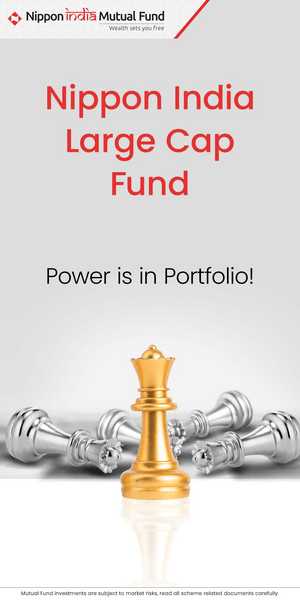Your Money: Getting a handle on investment risks in MFs
Mutual Fund

By Raghav Iyengar
Most investors think of ‘risk’ in the negative connotation. One can define risk as the process of identifying, analyzing, and mitigating uncertainty in the investment decisions. Seasoned investors and fund managers understand that risk and returns are inclusive of each other. You cannot expect good returns without considering the potential risk parameters at hand. Risk is necessary and inseparable from the desirable performance. A solid understanding of risk in its different forms can help investors better understand the opportunities, trade-offs, and costs involved with different investment approaches.
Every investment involves some degree of risk that can be quantified in either absolute or relative terms. Fund managers measure risk through various fundamental and technical methods. Investors think that taking high risk will give them higher returns, but that’s not right. One of the key tasks of fund managers is to manage risk, so that investors can get reasonable risk-adjusted returns on a long term basis that will help them create wealth.
Riskometer
People assume that certain products have similar risks. However, that is not the case. Every scheme has multiple levels of risk associated with it, leading to confusion even amongst the habituated investors. In October 2020, Sebi refined the Risk-o-meter further to capture the granular risks associated with mutual fund schemes. Funds are now classified under low, low to moderate, moderate, moderately high, high and very high risk based on their individual categories.
In August 2021, Sebi issued a circular revising the Risk-o-meter to determine risk based on actual underlying holdings of a fund, recognising market capitalisation, volatility and liquidity. Even though most fund managers have to reassess the risk of the funds they are managing, it is a boon since it promotes transparency amongst investors.
Thanks to the new Risk-o-meter, investors themselves have become cognizant and have started taking ownership of their investments. The dynamic nature of the risk will mean that investors will also be responsible for understanding their investment portfolio, leading to greater awareness.
Risk-adjusted returns
When markets start to fluctuate, investors have the tendency to either withdraw or invest in large quantities and make reactive changes to their portfolio. Investors who base their decisions on emotion often end up buying when the market is high and selling when prices are low, creating losses in their long term financial goals. They need to realise the importance of adjusting their returns in proportion to the risk. Accept the fact that you cannot escape volatility to realise substantial returns on their portfolio. Risk-adjusted returns measure drawdowns as well to ensure that risk would be equal to the beta-adjusted returns.
Based on the risk and rewards, investors can decide on the most appropriate allocation of their investment portfolio based on their appetite, investment horizon, and objective. Most experts will advocate that a fund that takes into consideration more risk than its benchmark, may experience better returns even in volatile phases. One also needs to take into consideration unplanned risks such as those related to geopolitical or economic issues. Even though risks may be plenty, a phased, well-informed and disciplined approach can help mitigate it.
The writer is chief business officer, Axis AMC
MUTUAL FUND TOOLS & CALCULATORS
Recent News
-
Axis MF: Gold and Silver Outlook
Mar 17, 2025
-
Axis AMC appoints Nandik Mallik as Head: Equity & Hybrid for its proposed SIFs
Mar 6, 2025
-
Axis AMC Partners with NISM to Launch Industry-First Talent Development Program "Unnati"
Mar 4, 2025
-
Axis MF launches Axis NIFTY AAA Bond Financial Services: Mar 2028 Index Fund
Feb 27, 2025
-
RBI Monetary Policy: Feb 2025 New Governor ushers in a softer rate regime
Feb 7, 2025






